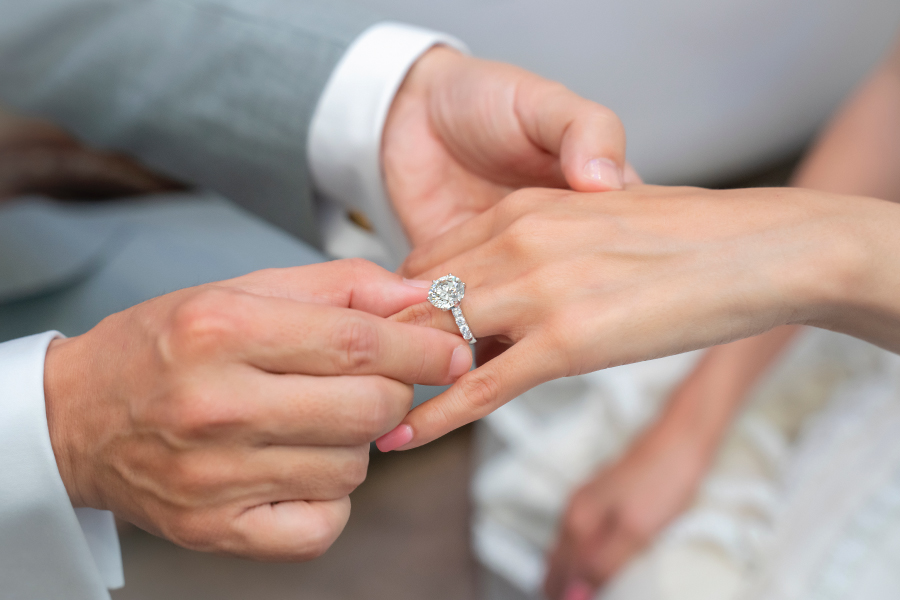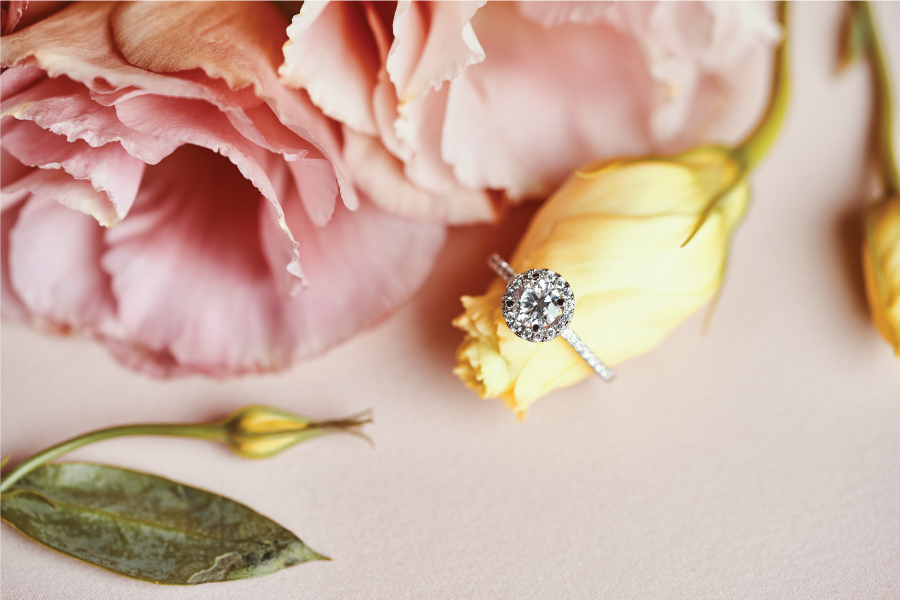Nothing is more aggravating than being unable to wear your diamond engagement ring or other fine gemstone jewelry due to skin irritation.
Those who find that they seem to be allergic to their much longed for diamond engagement ring, or fancy colored diamond engagement ring are usually very alarmed if this happens.
While they might expect such a reaction to costume jewelry, or lower karat gold, it’s the last thing they expect from their more expensive means to last a lifetime diamond jewelry.
Don't be too alarmed though if this does happen to you. When presented with a dilemma like this, you have a lot of options for solving the problem and going back to displaying that sparkler with painless pride.
Why is My Diamond Engagement Ring Irritating My Finger?
The first step is to figure out what is causing the irritation. There are various probable causes, and if you don't know what the genuine root of the problem is, it's far too easy to waste a lot of time and money attempting different solutions that don’t work, leaving you even more upset and frustrated.
Irritation can be divided into two categories: 1) Physical irritation from metal rubbing against the skin; 2) allergic reactions to jewelry. These irritations may appear to be the same, yet their origins and treatments are vastly different.

DIAMOND ENGAGEMENT RING
Physical Irritation From Diamond Rings Explained
This can be produced by the ring's design, a rough spot caused by normal wear and tear, or a ring that is not properly sized. If the ring is excessively tight, irritation might occur, and the cure may be as simple as sizing the ring up slightly. Similarly, if the ring has a rough place, it may usually be smoothed out by a jeweler.
Dietary changes can have a significant impact on the size of our fingers. If the ring has never bothered you before but now does, it's likely that a change in diet (eating more salty foods, for example) has caused your finger to swell somewhat.
Allergic Reactions to Diamond Engagement Rings Explained
Certain metals used in fine jewelry can cause allergic reactions in some people. This can manifest as a rash or skin discoloration. When certain people wear specific jewelry, their skin turns black or green.
Nickel, which is added to pure gold in many white gold alloys, is one of the most widespread metal allergies. White gold is white because of the nickel, but it can also trigger an allergic reaction.
Some people are allergic to silver, and we've even heard of someone being allergic to pure gold (yep, it's true). It is not as straightforward as it may appear to determine the exact cause and remedy of an allergic reaction.
White gold jewelry, in particular, is frequently plated to give it a brighter shine. Rhodium, a member of the Platinum family, is frequently used to plate white gold alloys.
People who are sensitive to nickel (or another metal) are rarely allergic to rhodium, but as the plating wears off their diamond jewelry, discomfort can occur since the skin is now in direct contact with the nickel (or other metal) to which they are allergic.
Furthermore, some people are allergic to gold solder, which contains a different combination of alloys than standard gold.
When a diamond engagement ring is resized, solder is frequently used to repair the ring. This can result in a perplexing situation in which a ring begins to bother someone after years of trouble-free wearing. A change in food, like a change in the chemical composition of the skin, can cause irritation.
Depending on the source of the allergic reaction, there are many different solutions. The important thing is to figure out what's triggering the reaction. If the itching began after the gemstone ring was sized or worked on, it's possible that you're allergic to the solder.
A regular diamond engagement ring plating schedule can sometimes be enough to address the problem. Plating may prevent sensitivity for a few weeks, six months, or longer, depending on how allergic you are.
Anti-allergic coatings can also be applied to jewelry to assist reduce allergic reactions. They've had mixed reviews, and the coatings, like plating, fade off with time. When plating fails, however, they may be sufficient to make your fine jewelry wearable for some.
Changing to a ring made of a different metal that you aren't sensitive to is sometimes the only option. Consider this an opportunity to upgrade or experiment with a new design.
We specialize in custom jewelry design, and one of our favorite projects is repurposing the raw elements (diamonds, gemstones, etc.) from a client's previous ring to create something new and unique.
The diamonds and jewels can be reused while the new ring is made of a different metal.
Platinum is hypoallergenic, making it a good choice for persons who are allergic to metals. There are additional white gold alloys that do not contain nickel that can be used as a substitute.
When choosing a new metal, it's a good idea to borrow a ring made of the material you're thinking about for a few days. You'll know for sure if it will bother your skin this way. We can either reproduce your existing ring in that metal or start from scratch after you've identified the suitable metal.

DIAMOND ENGAGEMENT RING
Finally, we are jewelry professionals who have seen a lot of jewelry-related irritation throughout the years. However, we are not doctors, and if you are having a serious allergic reaction, you should see a dermatologist.
What you should not do, however, is give up on the beautiful diamond engagement ring, fancy colored diamond engagement ring or other gemstone ring you love so much and simply consign it sadly to a jewelry box for occasional wear. Usually, between medical professionals, and jewelry professionals like our team, a solution can be found and you can happily and proudly wear your ring again once it’s been found.






